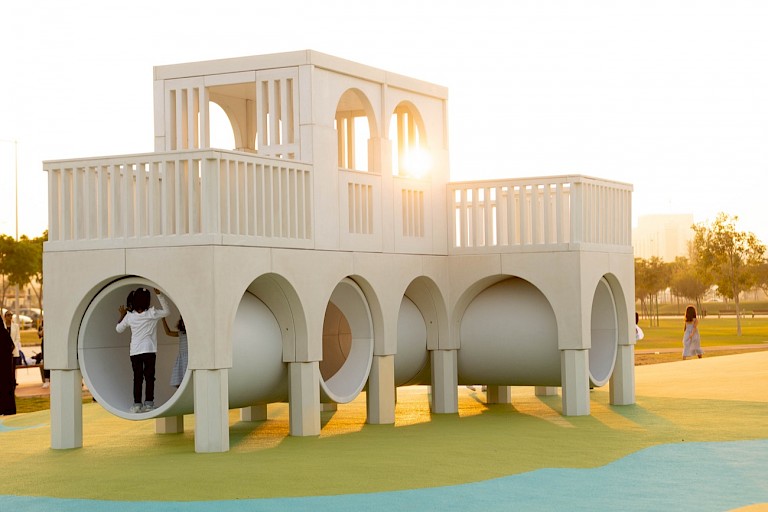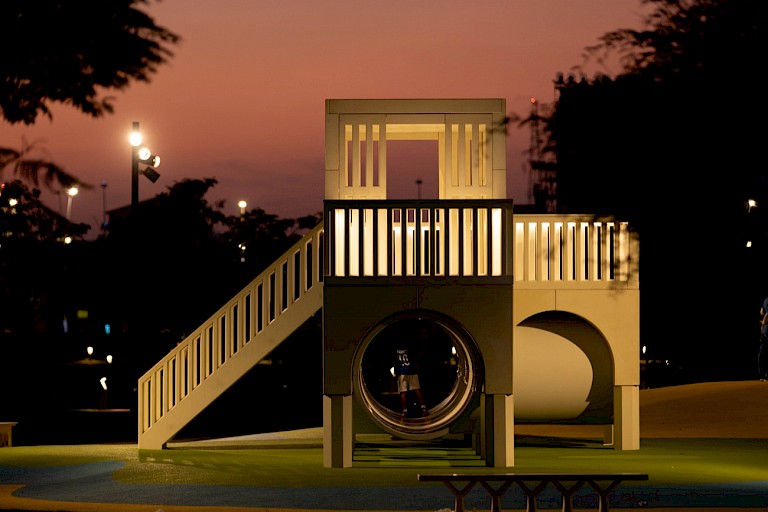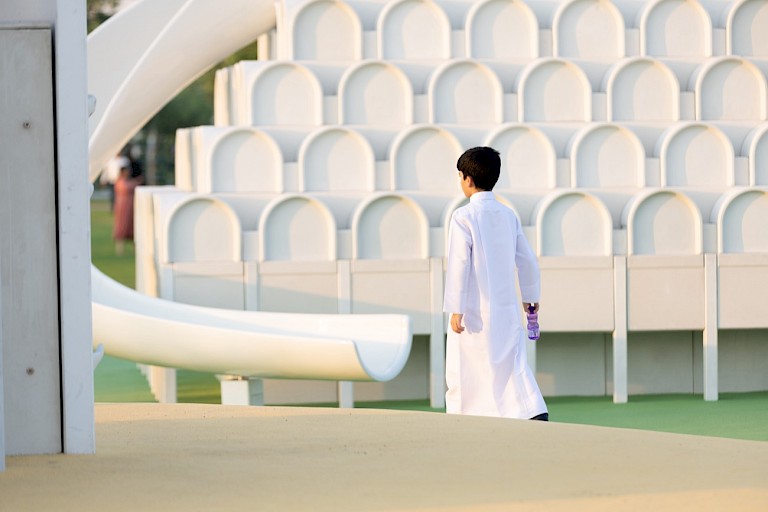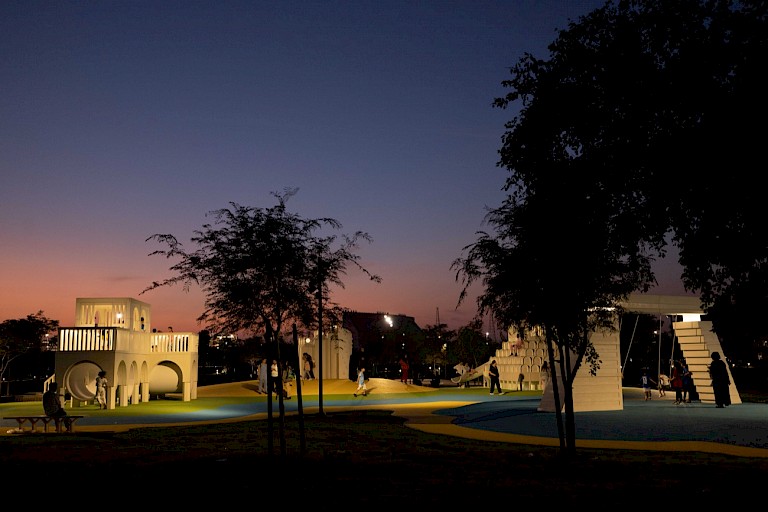



The Artist
Shezad Dawood, a contemporary artist, navigates diverse media, encompassing video, painting, neon, sculpture, and virtual reality. His art challenges established norms in image, language, place, and narrative, emphasising 'hybridity.' Dawood's creative process demands three points of intersection or confrontation, resulting in harmonious coexistence of opposing elements. He explores meaning and form through iteration and fosters community boundaries through collaborative efforts with experts from various regions.
His pivotal work, Leviathan, tackles pressing contemporary issues: marine ecosystems, climate change, refugees, mental health, and democracy. Launched at the 2017 Venice Biennale, Leviathan employs diverse media - painting, sculpture, neon, a 10-part video series, and a 3-part virtual reality (VR) series. The project extends into discussions and publications, engaging experts beyond the art realm.
Dawood's journey includes training at Central St Martin's, the Royal College of Art, and a PhD at Leeds Metropolitan University. Based in London, he's a Research Fellow at the Experimental Media Lab, University of Westminster. His solo exhibitions span prestigious venues globally. He's participated in notable group exhibitions, with his work housed in esteemed collections worldwide, including the Tate, Government Art Collection, British Museum, National Gallery of Canada, Los Angeles County Museum of Art, and UBS Art Collection.
The development of The Doha Modern Playground was a meticulous process that involved a deep understanding of Qatar's architectural heritage and a visionary approach to transforming iconic buildings into interactive play structures. Artist Shezad Dawood collaborated closely with local architect Fatma Al Sehlawi to bring this unique project to life.
The initial phase involved extensive research and consultation to select the buildings that would be represented in the playground. Four buildings from Qatar's modern era, dating between 1962 and 1987, were chosen: the Sheraton Hotel by William Pereira, the National Theatre and Ministry of Information by Triad CICO, Qatar University by Kamal El Kafrawi, and the Qatar Post Office by Twist & Whitley. These structures were emblematic of the nation's transition to independence and embodied the spirit of a newly formed state.
To faithfully recreate these architectural marvels, Dawood paid meticulous attention to detail. The miniatures were designed to capture the essence of the original buildings, preserving their materiality, surface textures, and distinctive features. This process required a profound understanding of the architectural nuances and a commitment to maintaining the integrity of the original designs.
Furthermore, the play objects and bench designs were constructed using stainless-steel subframes and glass-reinforced concrete (GRC). These materials were chosen for their durability and ability to withstand the environmental factors of the Corniche location, including sunlight, sea spray, and sand. The selection of materials was critical in ensuring the longevity and resilience of the structures.
In terms of design, Dawood incorporated key play functions associated with playgrounds, such as slides, swings, and tunnels. However, he also introduced creative adaptations to make the buildings suitable for a playground environment. For example, the pigeon cages of the Qatar Post Office were transformed into interactive elements, and the colonnades of the National Theatre and Ministry of Information were reimagined as tunnels for children to explore.
The concept of proportionality played a central role in the development process. Dawood intentionally designed the playground to be oversized, creating a sense of scale that resonates with both children and adults. This decision was guided by a desire to maintain a harmonious relationship between the playground and the original buildings it references. It allows visitors of all ages to engage with the structures on a meaningful level.
Operationally, The Doha Modern Playground is integrated into the Al Masrah Park at Corniche, providing a dynamic addition to the park's offerings. The playground is designed to be an inclusive space, inviting children, families, art enthusiasts, and park visitors to engage with Qatar's architectural legacy. Its location in a public park ensures accessibility to a wide audience, allowing the project to serve as a cultural and recreational focal point within the community.
In summary, the development process of The Doha Modern Playground was characterized by meticulous research, creative adaptation, and a commitment to preserving Qatar's architectural heritage. The collaboration between Shezad Dawood and Fatma Al Sehlawi brought a visionary concept to fruition, resulting in a unique fusion of art, architecture, and play. Through careful material selection, attention to detail, and a focus on proportionality, the playground stands as a testament to Qatar's enduring spirit and architectural legacy.
The Doha Modern Playground stands as a transformative cultural touchstone, influencing both local and global audiences. It masterfully intertwines art, architecture, and play, leaving an indelible mark on Doha's cultural milieu. At its essence, the project acts as a dynamic conduit, bridging Qatar's rich architectural heritage with its present-day urban fabric. By reinterpreting iconic modernist buildings as interactive play structures, the initiative not only pays homage to these architectural icons but also introduces a new generation to their profound historical and cultural significance.
For children, this playground transforms into a boundless realm of imaginative exploration, effortlessly melding art, architecture, and recreation. The miniatures are transformed into miniature cityscapes, inviting young minds to scale, slide, and explore while immersing themselves in Qatar's architectural heritage. This immersive journey sparks creativity and curiosity, fostering learning experiences that extend far beyond conventional classrooms.
The Doha Modern Playground also underscores the pivotal role of public art in nurturing community bonds. It has evolved into a communal nucleus where families, parents, and children converge for moments of play, learning, and bonding. Nestled in the strategic locale of Al Masrah Park at Corniche, it ensures accessibility to a diverse cross-section of the population.
Moreover, the project serves as a catalyst for introspection and dialogue about Qatar's architectural and social chronicles. Through an upcoming publication, communities are invited to share their impressions of the built environment and the personal narratives interwoven with these structures. This archival endeavour not only preserves individual stories but also contributes to a collective understanding of the evolving urban tapestry.
On the global stage, The Doha Modern Playground has garnered widespread acclaim for its innovative fusion of artistic expression and community engagement. It serves as a testament to Doha's cultural vitality and reinforces the city's stature as a crucible for creativity and innovation.
Furthermore, the project has spurred conversations on the imperative of safeguarding architectural heritage amidst the whirlwind of rapid urbanisation. It compels contemplation on how contemporary cities can pay homage to their heritage while forging ahead into a progressive future.
In summation, The Doha Modern Playground transcends the conventional boundaries of art installations. It is a living testament to the potency of creativity, play, and community engagement. By reimagining Qatar's architectural legacy in this dynamic and interactive manner, the project has not only enriched the lives of its visitors but has also contributed to a broader cultural dialogue about the significance of urban history and the enduring legacy of modernist architecture in Qatar.





